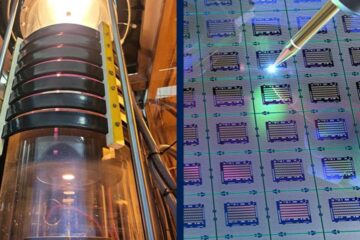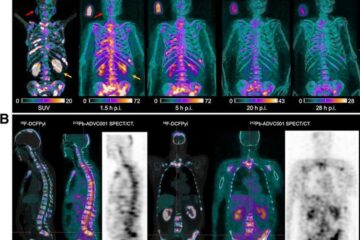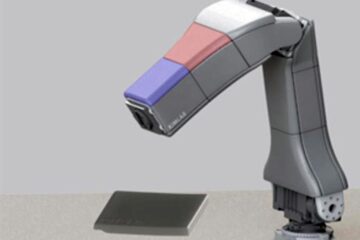Swell gel could bring relief to back pain sufferers

Dr Brian Saunders from The School of Materials and Professor Tony Freemont from The Faculty of Medical and Human Sciences have developed tiny gel particles that swell and stiffen when injected into a damaged area.
Investigations have revealed that degenerated animal intervertebral discs containing the injected 'microgels' regain their mechanical properties.
This development opens up the possibility of human patients being able to regain full mobility and flexibility after receiving spinal injections.
This would compare favourably with spinal fusion – a major surgical procedure with considerable recovery time for the patient, resulting in a significant loss of mobility at the fused and adjacent discs.
Degeneration of intervertebral discs causes holes in the load-bearing tissue of the disc, decreasing disc height and resulting in pain.
The microgel particles the research team have developed are like 'smart sponges' when dispersed in water.
The material is a fluid at a low pH – in other words, a low level of acidity – and can be injected through a syringe. It changes to a stiff gel at physiological pH values – that is, once it enters the body – due to absorption of water by the particles.
During their investigations, the research team injected the material into a damaged bovine intervertebral disc and increased the pH to biological levels by injecting an alkaline solution.
Professor Freemont, who works in the Division of Regenerative Medicine in the School of Medicine, said: “This research was motivated by the urgent need for a non-surgical method for repairing intervertebral discs.
“Our approach has the advantage of restoring spinal mobility whereas spinal fusion surgery results in a significant loss of mobility at the fused and adjacent discs.”
Dr Saunders said: “Although we are encouraged by our findings, much work lies ahead to develop a viable non-surgical repair technology to replace spinal fusion as the standard surgical treatment for chronic lower back pain.”
He added that future work will investigate biodegradable microgels that release additives to stimulate regeneration of intervertebral disc tissue.
The research was funded by the Engineering and Physical Sciences Research Council (EPSRC) and The University of Manchester Intellectual Property Ltd (UMIP).
Dr Saunders and Professor Freemont recently reported their findings in the online journal Soft Matter. They now hope to secure extra funding with a view to conducting clinical trials.
Media Contact
All latest news from the category: Life Sciences and Chemistry
Articles and reports from the Life Sciences and chemistry area deal with applied and basic research into modern biology, chemistry and human medicine.
Valuable information can be found on a range of life sciences fields including bacteriology, biochemistry, bionics, bioinformatics, biophysics, biotechnology, genetics, geobotany, human biology, marine biology, microbiology, molecular biology, cellular biology, zoology, bioinorganic chemistry, microchemistry and environmental chemistry.
Newest articles

Silicon Carbide Innovation Alliance to drive industrial-scale semiconductor work
Known for its ability to withstand extreme environments and high voltages, silicon carbide (SiC) is a semiconducting material made up of silicon and carbon atoms arranged into crystals that is…

New SPECT/CT technique shows impressive biomarker identification
…offers increased access for prostate cancer patients. A novel SPECT/CT acquisition method can accurately detect radiopharmaceutical biodistribution in a convenient manner for prostate cancer patients, opening the door for more…

How 3D printers can give robots a soft touch
Soft skin coverings and touch sensors have emerged as a promising feature for robots that are both safer and more intuitive for human interaction, but they are expensive and difficult…





















